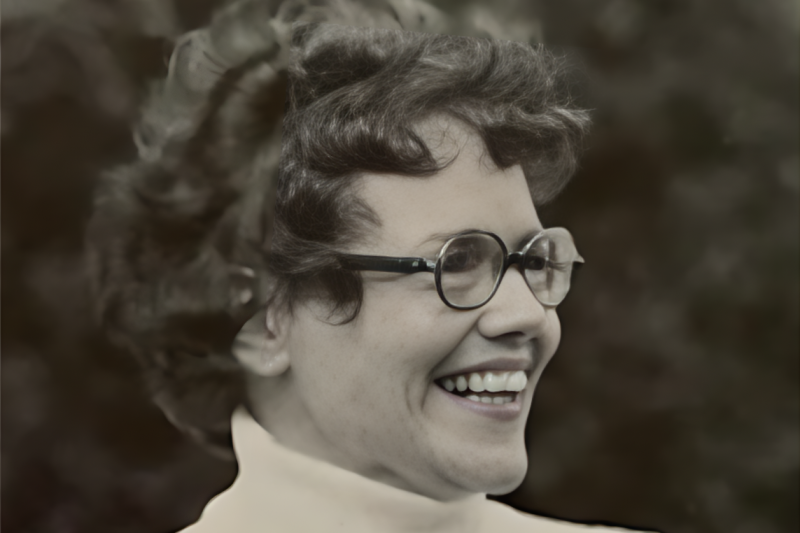“Developing a new understanding of students’ freedom to learn feels to me like the most pressing pedagogical and instructional challenge today. How do we create the preconditions for inclusive and robust discourse in the classroom?”

Academic freedom’s origin story
While academic freedom – the principle that scholars, researchers, and educators can engage in teaching and scholarship without the fear of censorship or retribution – is foundational to American higher education today, it is a relatively recent development.
“The idea of academic freedom is a modern invention,” said Stanford education scholar Emily J. Levine, author of Allies and Rivals: German-American Exchange and the Rise of the Modern Research University (The University of Chicago Press, 2021), at a lecture she recently delivered about how academic freedom came to be established at American universities.
Examining its early history – which can be traced to a scandal that erupted at Stanford University at the turn of the last century – can help inform our present understanding of what academic freedom is for and how it might be reinvigorated for our own time and place, Levine said.
“The story of how, when, why, and by whom academic freedom was created exposes the fault lines of current debates, the consequences of decisions made, and opens new and perhaps more robust formulations for the future,” Levine said during her April 25 talk titled “How a Stanford Speech Scandal Led to the Invention of Academic Freedom: The Case of Edward A. Ross.” The event was hosted by the Stanford Historical Society.
The now notorious Ross Affair
Levine opened her talk by describing the events that eventually lead to the founding of the American Association of University Professors (AAUP), a national organization that has played a significant role in defining and defending academic freedom in American higher education.
The turmoil began in 1896 at Stanford when Edward A. Ross, a young professor of economics, caught the ire of the university’s administrators, and even Jane Stanford herself, after his vocal criticisms of the railroad industry from which the Stanfords made their money.
Between 1896 and 1900, Ross advocated for various populist policies. He authored political pamphlets, including one titled Honest Dollars that was in support of the free silver movement, which argued for a reform of the country’s monetary supply to be backed by silver instead of gold. Silver was seen as a currency for ordinary, working-class people; gold was for monopolists and capitalists – like the Stanfords, who had amassed a large fortune in the construction of the railroad across the American West. (A rumor had also circulated that Ross had said to his students “a railroad deal is a railroad steal,” a claim he later denied.)
Jane Stanford urged then-president David Starr Jordan to fire the incendiary professor but Jordan resisted.
Things took a turn in 1900 when Ross delivered anti-Asian remarks at a meeting of the United Labor Organization where he called for the expulsion of Japanese immigrants from the United States and Stanford finally had enough of Ross’ outspokenness.
Ross’ opinions caused an uproar – not for being xenophobic and racist – but for being political in nature. Stanford believed that a university professor should not publicly express their partisan preferences for fear it could sully the reputation of the institution.
After much quarreling between Ross, Stanford, and Jordan, Ross eventually resigned, along with seven other professors in protest (representing about 10 percent of the Stanford faculty, Levine pointed out).
The dispute made newspaper headlines, and it also established new ways to think about the relationship between freedom of expression and scholarship.
“Ross’ departure was no longer a mere event,” Levine explained. “It rose to become an ‘affair’ in the eyes of the nation and the academy, and as a result, catalyzed the transformation of academic freedom from a haphazard custom to a professional ideal.”
Academic freedom as a modern invention
At the time, it was not unusual for universities to dismiss faculty whose views were not aligned with the interests of the institution. Academic freedom was not formalized in any professional capacity, said Levine who went on to describe how academic freedom became a principle underpinning the intellectual community at American colleges and universities today.
One of the Stanford professors who resigned was the philosopher Arthur Lovejoy (who went on to join the faculty at John Hopkins University). Lovejoy, along with another philosopher, John Dewey (then of Columbia University), established a new professional association – the AAUP.
Until the AAUP’s founding, there were no legal guarantees or economic security beyond what was stipulated in a professor’s contract with their institution, which was renewed annually.
The group’s first publication was the 1915 Declaration of Principles on Academic Freedom and Academic Tenure. Among several of the AAUP’s accomplishments were the safeguarding of academic inquiry through the security of tenure, the idea of a shared governance structure at a university, and the emphasis of higher education’s mission to serve the common good through knowledge production and dissemination – values that are now embedded in the academy.
As Debra Satz, a philosopher and the Vernon R. and Lysbeth Warren Anderson Dean of the School of Humanities and Sciences, said in her opening remarks, “The AAUP is an incredibly important bulwark for academic freedom’s defense.” In previous years, Satz has served as the president of the organization’s Stanford chapter.
Opportunities for academic freedom
While the AAUP’s efforts have led to significant contributions to protecting the rights of academic freedom in the United States, there are some contradictions and shortcomings associated with its particular formulation of this ideal that have persisted a century later, Levine said.
For example, by concentrating on protecting the rights of faculty through tenure, the AAUP created “a circular logic,” said Levine: “Tenure was needed for academic freedom and academic freedom required tenure. The circle was predicated on the idea of a common good that was never described.”
In addition, the AAUP efforts largely ignored the rights of students, Levine pointed out.
Unlike a version of academic freedom modeled by German universities that guaranteed rights for both instructor and pupil, the AAUP focused solely on protecting the rights of faculty. Levine said there is an opportunity to expand what academic freedom could look like for students as well.
“Developing a new understanding of students’ freedom to learn feels to me like the most pressing pedagogical and instructional challenge today,” Levine said, asking further: “How do we create the preconditions for inclusive and robust discourse in the classroom?”
Another consequential outcome was how the AAUP viewed the relationship between scholars and their responsibilities to serving the public. But there were gaps here as well: The AAUP offered no specific definitions of what academic responsibility should look like. Rather, the founders saw it as self-imposed and enforced by the public opinion of the profession.
“But what is academic responsibility? And how do we determine the public opinion of the profession?” Levine asked.
These are just some of the questions that have lingered in the legacy of the AAUP’s early efforts, and which can be traced in disputes throughout the 20th century and into today.
“With every cycle of academic freedom cases that would follow from the McCarthy era of the 1950s to the Vietnam protests of the 1960s and early ’70s, the law school debates about critical race theory in the ’80s, the Yale culture wars of the ’90s up to our current moment, we are reminded of the consequences of the ambiguity of these statements and the stakes of not clarifying,” Levine said.
Levine is serving on the Ad Hoc Committee on University Speech that will be looking at the form and structure of academic freedom at Stanford.
Faculty mentioned in this article: Emily Levine



